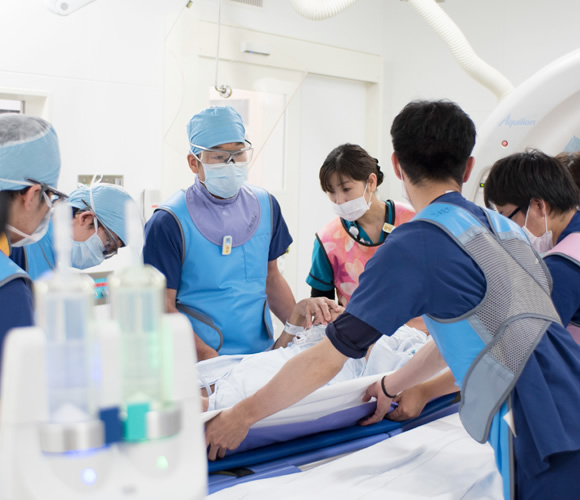
We aim to offer the best in diagnostic radiology and interventional radiology.
The main activity of the department of diagnostic radiology at Hiroshima University Hospital is the interpretation and analysis of the medical imaging (CT, MRI and PET etc) which is then reported to each medical department. Advances in diagnostic radiology are remarkable and the clinical significance of such diagnosis increases everyday. Thus, our department provides key support to the diagnostic activities of the University Hospital.
Also, in the department of diagnostic radiology, we prioritize minimally invasive treatment (interventional radiology), employing image diagnosis techniques.
We strive to reach Japan’s top level in clinical practice, education and research.

Our department, originally established in 1948 as a department of radiology providing both diagnostic radiology and radiation therapy, but due to the rapid development and specialization in the two fields, the department split into 2 laboratories in 2009: the departments of diagnostic radiology and the radiation oncology.
In February 2010, Dr Awai, a graduate of Hiroshima University, took up the new post of chairman and professor at the department of diagnostic radiology. This marked a new start for our brand new laboratory. Although our staff is small, we are striving to become the best in Japan in the fields of clinical practice, education, and research.
Research summary
In the field of diagnostic imaging, we perform a wide variety of clinical research using 320-detector CT, 3-Tesla MRI, PET-CT et al. Our work also includes, the development of new diagnostic imaging methods from the point of medical engineering and research on the biological effect of low-dose X-ray exposure in diagnostic imaging.
In interventional radiology, we focus on research about new therapies for liver cancer, treatment for portal hypertension and a non-vascular intervention that uses a CT system dedicated for interventional radiology.
In our laboratory, we are actively collaborating with domestic and foreign universities and corporations such as the Research Institute for Radiation Biology and Medicine of Hiroshima University, Illinois Institute of Technology Hiroshima City University, Kumamoto University, Canon Medical Systems Corporation and Hitachi Medical Corporation.


